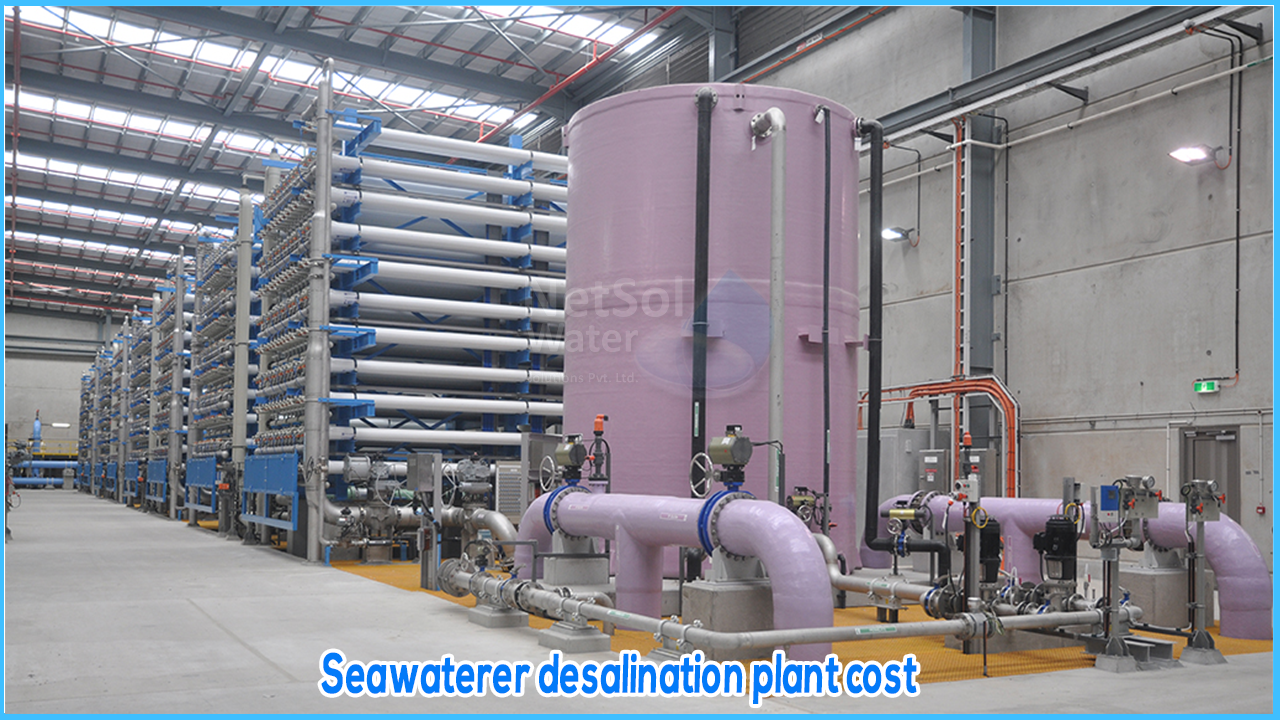WHAT IS A SEAWATER DESALINATION?
Desalinationis a process that takes away mineral components from saline water. In a broader sense, it refers to the process of removing salts and minerals from a target substance, such as soil desalination, which is a problem in agriculture. Desalination of saltwater (particularly seawater) produces water suitable for human consumption or irrigation. Brine is a by-product of the desalination process. Many seagoing ships and submarines employ desalination. The majority of present interest in desalination is centred on providing cost-effective fresh water for human consumption. It is one of the few rainfall-independent water resources, along with recovered wastewater.
HOW DOES IT WORK?
The removal of salt and contaminants from saltwater to produce fresh water is known as Seawater desalination. The reverse osmosis process is used in desalination plants. Seawater is piped from the ocean into the desalination plant, where it undergoes pre-treatment filtration to remove the majority of large and minute particles.
The filtered seawater is then pushed under pressure through special membranes, thereby reversing the natural osmosis process.Salt, germs, viruses, and other pollutants are isolated from seawater by the membranes microscopic pores. They essentially function as minuscule strainers. Approximately half of the seawater that enters the plant is converted to fresh drinking water.
The salt and other pollutants removed from sea water are subsequently diffused back into the ocean, ensuring that it mixes swiftly and has minimal influence on the marine environment.Before it reaches the consumers, the desalinated water is treated further to satisfy drinking water regulations.
The desalination of small amount of water can be done at home as well.
BENEFITS OF SEAWATER DESALINATION
- 1. Ensures that individuals have access to safe drinking water
- 2. Provides irrigation water to the agriculture sector
- 3. The water is of good quality
- 4. Makes use of tried-and-true technology
- 5. Helps preserve current freshwater supplies
- 6. No shortage of supply, as there is no limit to the amount of ocean water that can be used.
- 7. Remains unaffected by changing circumstances.
- 8. Desalination Plants are in a secure location.
- 9. Assist in habitat preservation.
COST OF DIFFERENT DESALINATION PLANTS IN UAE
At present there are 35 desalination plants in the UAE (including six major ones). The cost of one desalination plant is dependent on a number of parameters, including the source water, location, treatment procedure, and plant size.
For example- Capital, debt service, and operating costs all affect the unit cost of desalinated water. Desalinated brackish water can cost somewhere between $1.25 and $2.60 per 1,000 gallons, whereas desalinated seawater can cost anywhere between $3.60 and $5.80 per 1,000 gallons.
- JEBEL ALI DESALINATION PLANT
According to the director of the Dubai Electricity and Water Authority (DEWA), the cost of this project in Jebel Ali to desalinate saltwater using reverse osmosis will be over 800 million dirhams ($217.8 million).
- TAWEELAH DESALINATION PLANT
Though it is not yet completed, but according to reports more than 40 companies initially showed interest in the Taweelah tender.Once complete, the Taweelah power is expected to raise the emirate’s proportion of desalinated produced water by RO from 13 percent today to 30 percent by 2022.
- DEWA STATION DESALINATION PLANT
This project, run by the Dubai Electricity and Water Authority (DEWA), is one of the UAE's largest power and desalination facilities, producing 636,600 m3/day of potable water and generating 2,885MW of total power.
COST OF DESALINATION PLANT IN INDIA
- Minjur Seawater Desalination Plant
The Minjur Desalination Plant is a reverse osmosis, water desalination plant at Kattupalli village, a northern suburb of Chennai. Built on a 60-acre site, it is the largest desalination plant in India.INR5.15bn (€172 m) Minjur desalination plant has a capacity of 100,000m³/day (100mld)
- The second largest seawater desalination plant in India is in Jamnagar, Gujarat, with a capacity of 96,000m³/day. The costs are near around 10bn (€114m). This seawater desalination plant that will be setup under a Public-Private Partnership model through a special purpose vehicle (SPV) and it will have the capacity to treat 100 million litres of sea water per day.
- The other upcoming Seawater desalination plants in India of 27-crore litre capacity are being planned in Mundra, Mandvi, Dwarka, Porbandar, Sutrapada, Rajula and Ghogha, and tenders have been issued for them by the Gujarat government.



